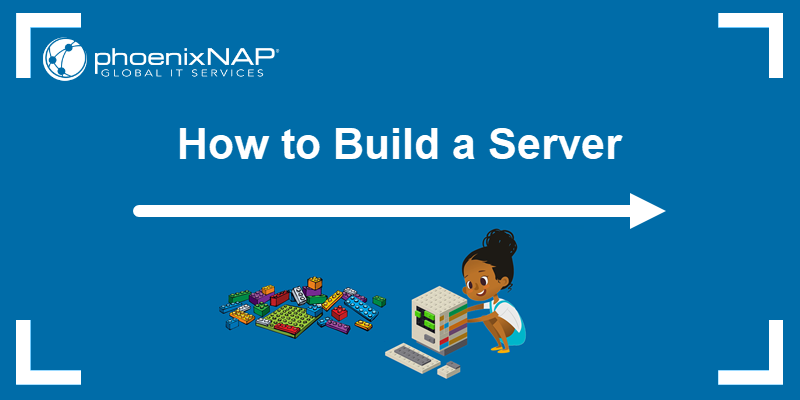
Renting or buying off-the-shelf servers is a safe choice, especially for small enterprises. However, constructing a server from scratch is a viable option that can optimize company operations, develop in-house know-how, and save money in the long run.
Learn how to build a server and choose the right hardware and software components while keeping your costs in check.

There are several options for getting a server:
Each option has its advantages and trade-offs. The table provides a quick overview of the differences between building, buying, or renting a server:
| Building Servers | Buying Servers | Renting Servers | |
|---|---|---|---|
| Initial Cost | High | High | Low |
| Cost Over Time | Cost of component upgrades and continued maintenance. There is no overarching warranty for the server. | Maintenance, electricity, and internet costs. | Over an extended period, renting can become more expensive than buying or building. |
| Maintenance | Owner's responsibility. | Owner's responsibility. | Usually handled by the hosting provider. |
| Customization | Full customization. | Complete control over specifications. | Limited by the provider's options. |
| Flexibility | Total freedom to build and scale servers to match workload requirements. | Challenging to scale and may require additional equipment or servers. | Possible to scale up or down based on needs, but this may result in additional fees. |
| Technical Expertise | Need to understand component compatibility, assembly, and server management. | Need to understand server use and management. | Managed by the provider to varying degrees. |
| Deployment Speed | Researching, purchasing, and component assembly is a time-consuming process. | The time to deploy the server is based on setup complexity. | Fast deployment within minutes to hours. |
| Data Control/Security | Total data control but also full responsibility for data protection. | Keeping sensitive data on-premises is a priority for some companies. Buying a server provides more control over the data. | Depending on the provider's data center location, there might be concerns about data laws and regulations. |
| Long-term Commitment | Due to the effort and resources devoted to building and customizing a server, building one is a long-term investment. | Due to the high initial investment buying a server is a commitment. | Most hosting providers offer monthly contracts. Long-term commitments are rare. |
| Infrastructure Needs | Ensuring component cross-compatibility is challenging. Space to assemble and house the server (security, colling, backup power, etc.) is also required. | A place to house the server, which also might require cooling, power backup, and security. Colocation is an excellent way to reduce these costs. | The provider handles everything. |
When selecting a server, it's crucial to take into account different factors. Refer to the list below for some of the main points to consider.
Complete the following steps to build a dedicated server from scratch:
Consider what tasks the server needs to perform. Web hosting, data storage, gaming, or virtualization servers require different hardware specs and software solutions.
Compile a list of resources and applications and write down the estimated number of users the server needs to handle. It is a good idea to increase the calculated system resources by 15% to accommodate for fluctuations in load.
Use the following list as a broad guideline:
Central Processing Unit (CPU)
The CPU is the server's main component for processing various requests from the operating system and applications.
Consumer-grade CPUs, like Intel Core or AMD Ryzen, can be used to power smaller servers with a light workload. These CPUs are a good balance between cost and performance and can handle tasks like web hosting, basic file serving, or light virtualization.
Server-grade CPUs like Intel Xeon or AMD EPYC are more expensive but a more reliable option for businesses that handle important workloads and need more flexibility.
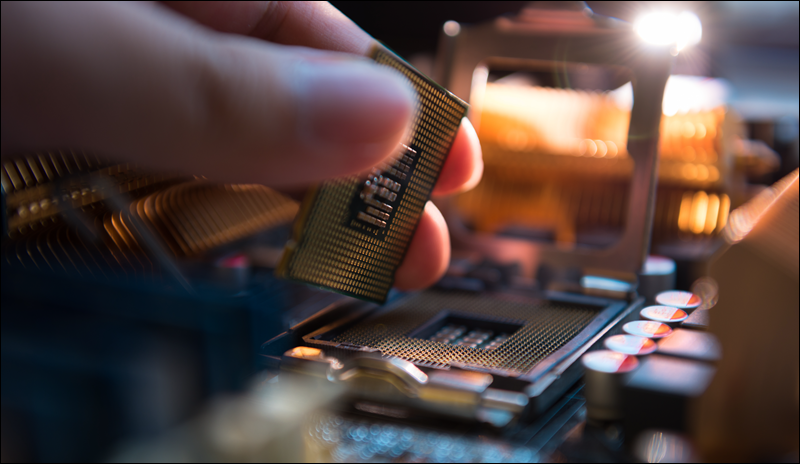
Memory (RAM)
RAM (Random Access Memory) provides temporary data storage and allows the server CPU to access data much faster than from a hard drive or SSD.
Having more RAM allows the server to handle numerous tasks simultaneously without slowing down.
The minimum RAM requirement for most servers is 16GB. Database servers or virtual machines serve vast amounts of data to many clients and may need 64GB to 128GB of RAM or even more.
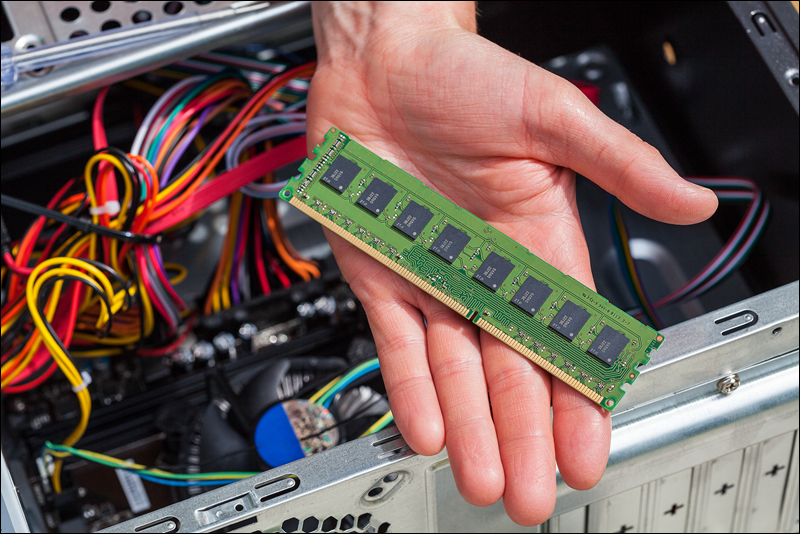
Storage
HDD (Hard Disk Drive) and SSD (Solid State Drive) are used as storage devices in servers, but they differ in cost, performance, construction, and lifespan.
HDDs are cheaper per gigabyte than SSDs, but SSD speed and reliability often justify the higher price tag. These features are especially important for systems that rely on frequently accessed data, like servers.
Many servers use an SSD for the operating system and most-used applications and an HDD for bulk storage and redundancy solutions.
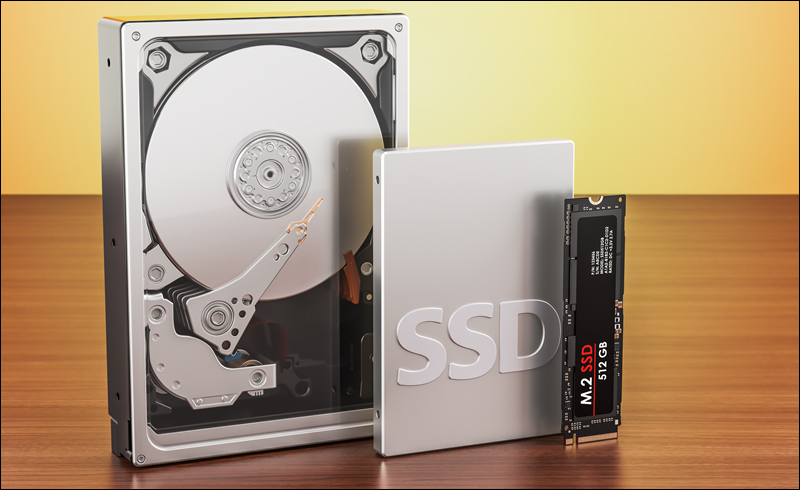
Motherboard
The motherboard facilitates communication between all the server's components. Every server component, like the CPU, RAM, storage devices, and expansion cards, is either housed on or connected to the motherboard.
Ensure that the motherboard is compatible with the chosen CPU unit, confirm the number of RAM slots and maximum RAM capacity, and check that it has enough SATA/PCIe/M.2 slots for your storage needs.
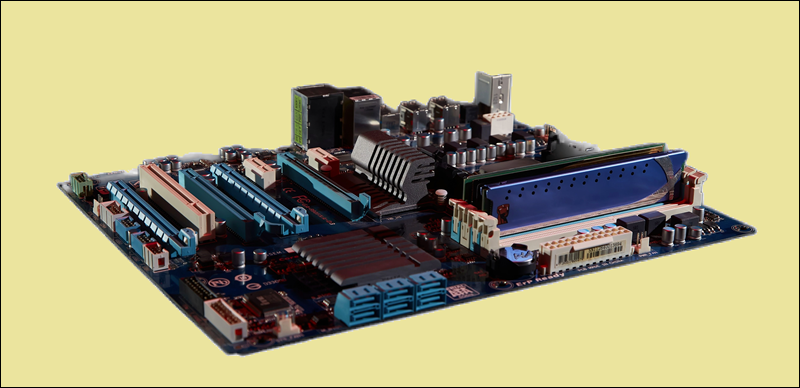
Network Interface Card (NIC)
The NIC is a piece of hardware that enables a server to connect to a network. Motherboards typically come with inbuilt gigabit NIC cards. Severs that require lots of throughput and low latency may need to be upgraded to a larger 10-gigabit card.
The primary function of a NIC is to transmit and receive data packets over a network. It converts the data from the computer's bus into a format suitable for the network medium (like Ethernet) and vice versa.
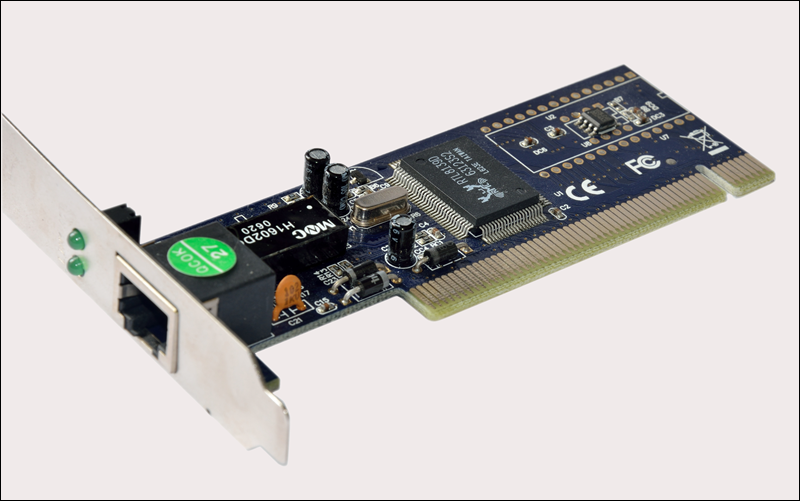
Power Supply Unit (PSU)
The PSU converts electrical energy from a source (typically a wall outlet) into the correct voltage and current to power the components of the system.
Ensure that the PSU provides enough power to supply all your components. When building or upgrading the server, choose a reliable and appropriately rated PSU. The power supply should have an energy efficiency of at least 80% at different loads.
A poor-quality or inadequate PSU can lead to system instability, reduced component lifespan, or even damage.
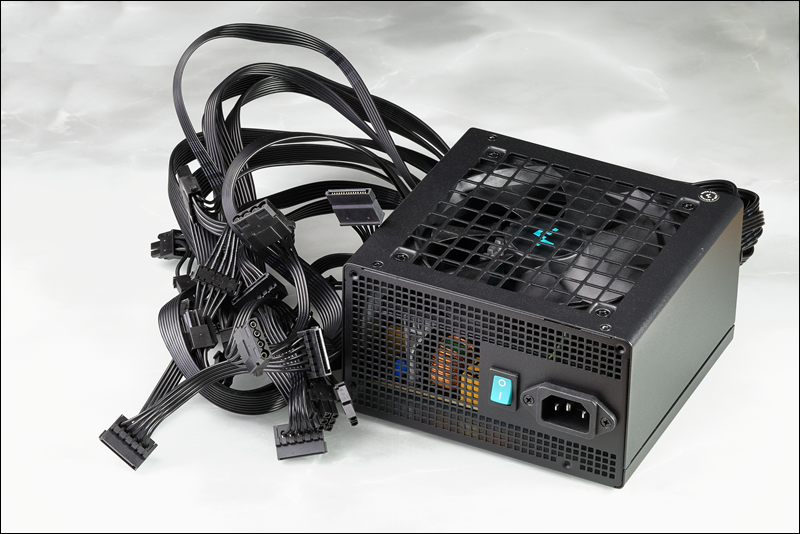
Cooling Solutions
Servers produce a significant amount of heat due to their powerful and densely packed components. Coolers ensure that server components stay within safe temperature limits, maintaining optimal performance and prolonging the life of the equipment.
Stock coolers might be enough for basic servers, but it's worth considering more expensive aftermarket coolers or liquid cooling for high-performance setups. Additionally, server rooms must be properly cooled and ventilated to dissipate the heat effectively.
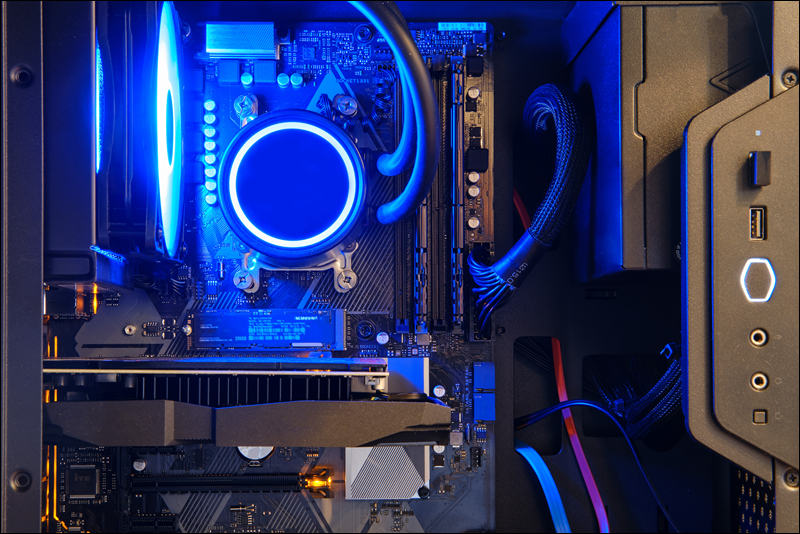
Chassis/Case
The chassis is the physical frame or housing that contains the server's components. Flat and wide rackmounts are common in data centers.
An alternative solution is using tower server chassis that resembles standard PC towers but is optimized for server components. These are useful for businesses or environments where a rackmount infrastructure isn't necessary. Make sure that the chassis you choose can accommodate all your components and has good airflow.
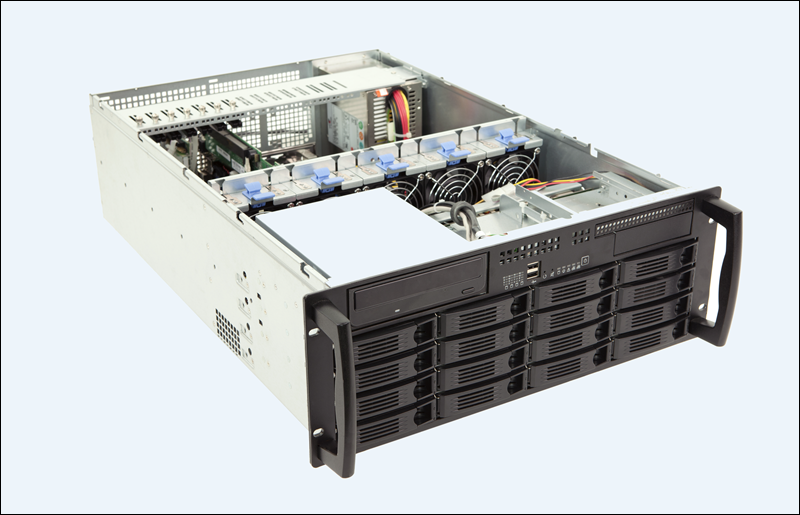
Optional Components
Operating System (OS)
A server operating system enables servers to run essential processes and functions and is the prerequisite for installing other software. Choose an OS based on your specific requirements, server type, and the environment in which the server will be deployed.
Server Software
Server software facilitates specific functions and features on a server. Different server types need particular software to be able to perform their tasks.
This table provides an overview of software for five server types divided into four functional areas. Each software mentioned is highly popular within its domain, but many other options are available for each category.
| Web Server | Database Server | Virtualization Server | Gaming Server | Dev Server | |
|---|---|---|---|---|---|
| Server Software | Apache | MySQL | VMware ESXi | Minecraft Server | Jenkins |
| Nginx | PostgreSQL | Hyper-V | Unreal Engine | GitLab | |
| Microsoft IIS | Microsoft SQL Server | KVM | Source Dedicated Server (SRCDS) | Docker | |
| Management Tools | cPanel | phpMyAdmin | VMware vCenter Server | TCAdmin | Kubernetes |
| Webmin | SQL Server Management Studio | oVirt | GameCP | Ansible | |
| Plesk | Oracle SQL Developer | Proxmox VE | Pterodactyl | Puppet | |
| Monitoring Tools | Nagios | Zabbix | SolarWinds VM | GameTracker | Prometheus |
| Datadog | SolarWinds DPA | vRealize Operations | Battlemetrics | Grafana | |
| New Relic | Prometheus | Nagios | RCON Tools | Sentry | |
| Security Software | ModSecurity | MySQL Enterprise Firewall | VMware NSX | Steamworks SDK | OWASP ZAP |
| Cloudflare | SQL Server Audit | pfSense | GameGuard | SonarQube | |
| Sucuri Firewall | Oracle Advanced Security | Sophos UTM | PunkBuster | Docker Bench for Security |
Servers share many components with personal computers, making their assembly similar to building regular PCs. If you do not have extensive experience in assembling components, follow the tips below:
The cost of building a server can vary depending on the intended use case and the chosen specifications. The following table illustrates the cost of a mid-range server suitable for running multiple applications, hosting a website, or a small virtualization setup.
This is a broad overview, and actual prices might differ due to regional differences, specific brands/models, and discounts. The prices are approximate values at the time of writing this article.
| Component | Description | Approximate Cost |
|---|---|---|
| Hardware | ||
| CPU | Intel Xeon E-2236 6-Core | $350 |
| Memory (RAM) | 64GB (2 x 32GB) DDR4 ECC Registered RAM | $150 |
| Storage | 2 x 1TB NVMe SSD (RAID configurable) | $280 (total) |
| 2 x 4TB HDD (RAID configurable) | $150 (total) | |
| Motherboard | SuperMicro X11SCA-F | $375 |
| Network Interface Card (NIC) | Onboard Gigabit NIC | $0 |
| (Optional) NIC | 10-Gigabit NIC | $90 |
| Power Supply Unit (PSU) | 650W 80 PLUS Gold | $100 |
| Cooling Solutions | Aftermarket Liquid Cooler | $70-200 |
| Chassis/Case | Mid-Tower Server Chassis | $120 |
| (Optional) Graphics Card | Basic GPU | $50-100 |
| Software | ||
| Operating System (OS) | Ubuntu Server | $0 |
| Windows Server 2022 Standard (price can vary due to licensing and discounts) | $1069 | |
| Other Software | Most server software has free or open-source versions. Additional costs for proprietary software may be necessary. | Varies (potentially free) |
| Total Estimated Cost | ||
| Without a 10-Gigabit NIC and using Ubuntu Server | $1,675 | |
| With a 10-Gigabit NIC and Windows Server 2022 | $2,850 |
This guide showed how to build a server, establish your server requirements, and choose corresponding hardware and software components.
Building a server is only the first step in managing your infrastructure. You need a well-thought-out strategy and set of server security policies that account for all potential risks.